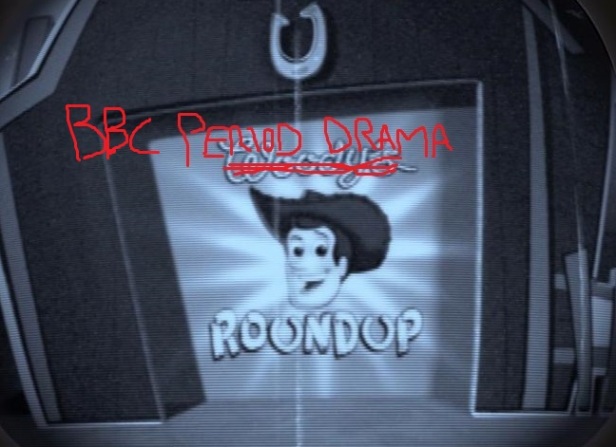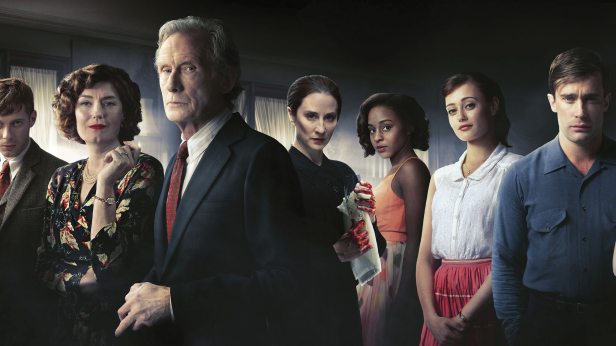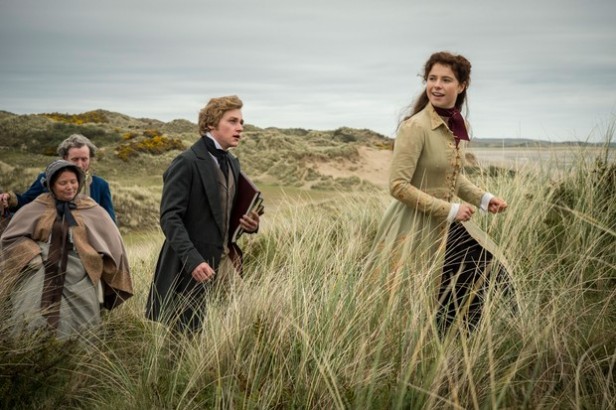
Ordeal by Innocence; The Woman in White
Mystery! Murder! Madness! Men up to no good! Yes, it’s that time again: the BBC Period Drama Round-up, wherein I review any vaguely historical fiction I’ve seen on TV recently. Fortunately, the Beeb has been good enough to put on two Sunday night period mysteries back to back: Ordeal by Innocence, an Agatha Christie story set in the 1950s, and The Woman in White, adapted from Wilkie Collins’ 1859 novel.
Spoilers for Ordeal by Innocence, and for the first episode of The Woman in White, follow.
Ordeal by Innocence (BBC1)

Sarah Phelps’ adaptation of Agatha Christie’s novel tells the story of the Argylls, a family of foundlings raised by a couple of rich eccentrics. Rachel Argyll (Anna Chancellor), the mother, is murdered – supposedly by her son Jack (Anthony Boyle), who then died in prison. One year later, father Leo (Bill Nighy) is getting ready to marry his secretary, and some weirdo arrives at the door claiming he knows for a fact Jack was innocent – meaning the killer is still at large.
This is very much your glossy Sunday night Agatha Christie, with all the good and bad that implies. Bill Nighy and Anna Chancellor do able work as the difficult heads of a family pulled together from waifs and strays adopted over the years; it’s implied the parents saw the kids they brought home, now adults, more as charity cases than children. Much of the drama is focused on the adoptees’ dysfunctional relationship to each other and to their parents.
The problem is that with five siblings, two parents, one husband, the housekeeper, the secretary, the chief of police, a mysterious scientist bearing revelations about the past and various other supporting characters, we don’t actually get much to depth to any of the central quintet. Far too much time is spent with the very tedious Dr Calgary, terribly overacted by Luke Treadaway, who gulps and mopes and stutters through every scene. Some of the siblings are more interesting than others. The eldest, Mary (Eleanor Tomlinson), is still jealous of her later brothers and sisters, and unhappily married to the wonderfully slimy Philip (Matthew Goode). Working-class war vet Mickey (Christian Cooke) and black librarian Tina (Crystal Clarke) were repudiated by their mother for a secret relationship. But these potentially exciting leads remain underdeveloped, while Jack never really becomes more than two-dimensional, and Hester (Ella Purnell) barely there at all.
The conclusion to the mystery is apparently greatly changed from the original novel, which I can’t say I’ve read, but I found it one of the strongest parts of the show. While I never quite bought that Bill Nighy would kill his wife over a threat of divorce, his guilt fits with a pervasive theme of men abusing power: Leo with Rachel; Philip with Mary; the corrupt police officer who has Jack murdered. Even Dr Calgary’s commitment to a mental institution is implied to be against his will and in connection with his guilt over working on the atomic bomb. But the characters who get us to that conclusion struggle to stand out from other, similarly glossy adaptations.
The Woman in White (BBC1)

Following immediately on the heels of Ordeal by Innocence is another tale of mystery in a remote country manor, another plot kicked off by a mysterious escapee from an asylum – and more men behaving badly.
The trailers for The Woman in White, adapted by Fiona Seres, emphasised that theme of evil men. Among the first words are Marian Halcombe’s (Jessie Buckley), raging against men who “crush women time and time again and go unpunished”, though the first episode only implies doom through mysterious notes, questionable diagnoses of madness, and a framing story that suggests catastrophe to come.
Let’s get that out of the way first: the framing story is easily the weakest aspect of an otherwise very strong show, adding little except frustratingly vague references to the evils that will befall the characters. There is a sort of mystery as Mr Nash (Art Malik), a detective figure, appears to be trying to establish the truth behind a young woman’s death, but it feels at times that his conversations are artificially obscuring things he and his interviewees ought to discuss more openly. The foreboding framing story has become oddly popular recently, but it’s rarely more effective than just getting on with the story.
Luckily, the central story of The Woman in White is excellent. Young painter Walter Hartright (Ben Hardy) decamps from a Bohemian life in London to Limmeridge House in Cumberland at the behest of a wealthy invalid (played wonderfully by Charles Dance), to be a live-in art teacher for Fairlie’s nieces. But the night before he leaves, he meets a terrified woman in white who seems to have escaped a mental asylum – and knows Limmeridge. Stranger still, the woman in white looks a lot like the niece, Laurie Fairlie (Olivia Vinall, who plays both women). The details of her misfortune – and the doom presaged by the very first shot of Olivia Vinall in a coffin – drive the plot.
What really stands out about The Woman in White is the brilliance of its characters. The cast is much more sparse than Ordeal by Innocence, and the characters they play much more vividly written. Once Walter reaches Limmeridge House, we are introduced in quick succession to its inhabitants, and each makes a strong impression. First there’s Mr Fairlie (Dance), an irascible old man entombed in his study who insists every slight movement or noise is an intolerable assault by the world on his delicate nerves. Next we meet Marian Halcombe, played with a restless swagger by Jessie Buckley, who with her bold outfits and easy conversation stands out immediately in a Victorian world. Finally, Laura Fairlie, who seems at first like a more typical Victorian heroine, is soon shown to be as freethinking and outspoken as Marian; at times the two resemble a more liberated version of the Dashwood sisters. When we finally meet Sir Percival Glyde (Dougray Scott), whose arranged engagement to Laura Fairlie has cut off her burgeoning romance with Walter, and whose true character has been darkly hinted at by an anonymous letter, he is the perfect mix of respectable and savage.
Hopefully The Woman in White will continue in that vein. It’s already introduced itself in excellent fashion, bringing a sense of purpose and timeliness to its classic Gothic tale.